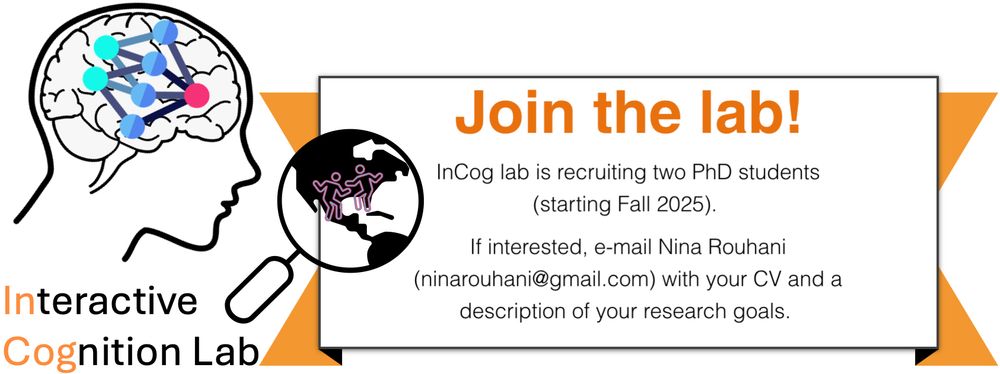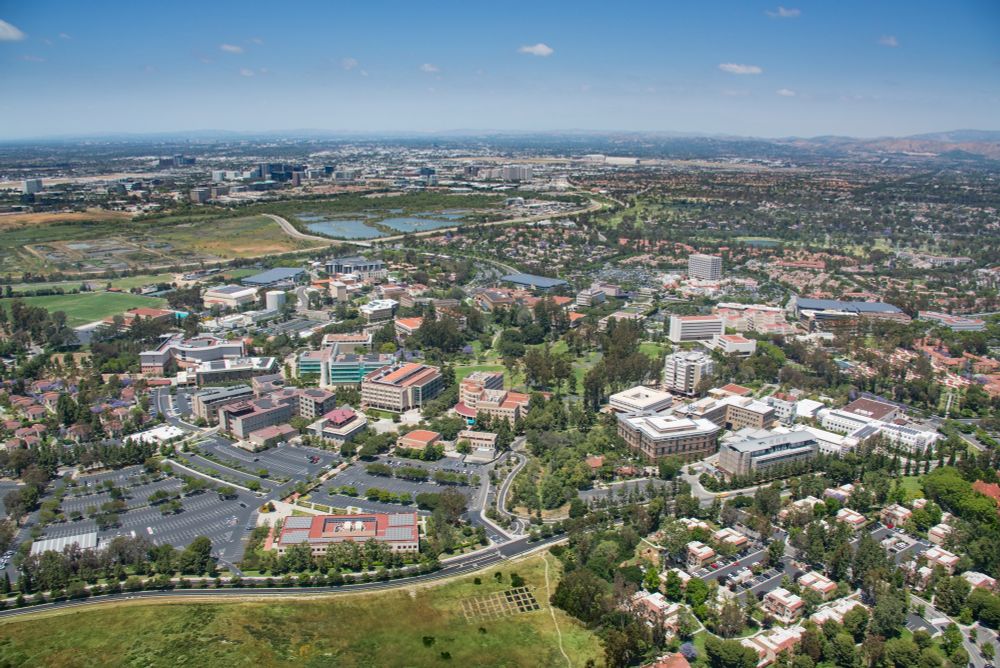Nina Rouhani
@ninarouhani.bsky.social
3.5K followers
570 following
24 posts
🧛🏻♀️ assist prof in brain & cognitive science @USC
(postdoc @caltech, phd @princeton)
🔎 computational approaches to reinforcement learning, memory & decision-making at individual & collective level; comp psychiatry
http://www.rouhanilab.com
Posts
Media
Videos
Starter Packs
Pinned
Reposted by Nina Rouhani
Reposted by Nina Rouhani
Reposted by Nina Rouhani
Reposted by Nina Rouhani
Reposted by Nina Rouhani
Reposted by Nina Rouhani
Reposted by Nina Rouhani
Reposted by Nina Rouhani
Reposted by Nina Rouhani
Reposted by Nina Rouhani
Reposted by Nina Rouhani
Open Mind
@openmindjournal.bsky.social
· Aug 23
Merits of Curiosity: A Simulation Study
Abstract‘Why are we curious?’ has been among the central puzzles of neuroscience and psychology in the past decades. A popular hypothesis is that curiosity is driven by intrinsically generated reward signals, which have evolved to support survival in complex environments. To formalize and test this hypothesis, we need to understand the enigmatic relationship between (i) intrinsic rewards (as drives of curiosity), (ii) optimality conditions (as objectives of curiosity), and (iii) environment structures. Here, we demystify this relationship through a systematic simulation study. First, we propose an algorithm to generate environments that capture key abstract features of different real-world situations. Then, we simulate artificial agents that explore these environments by seeking one of six representative intrinsic rewards: novelty, surprise, information gain, empowerment, maximum occupancy principle, and successor-predecessor intrinsic exploration. We evaluate the exploration performance of these simulated agents regarding three potential objectives of curiosity: state discovery, model accuracy, and uniform state visitation. Our results show that the comparative performance of each intrinsic reward is highly dependent on the environmental features and the curiosity objective; this indicates that ‘optimality’ in top-down theories of curiosity needs a precise formulation of assumptions. Nevertheless, we found that agents seeking a combination of novelty and information gain always achieve a close-to-optimal performance on objectives of curiosity as well as in collecting extrinsic rewards. This suggests that novelty and information gain are two principal axes of curiosity-driven behavior. These results pave the way for the further development of computational models of curiosity and the design of theory-informed experimental paradigms.
dlvr.it
Reposted by Nina Rouhani
Pete Hitchcock
@pf-hitchcock.bsky.social
· Aug 29

Information for prospective graduate students
The Translational Lab will be reviewing applications this cycle! Prospective students can apply through Clinical Science or Cognitive and Computational Sciences in the Emory Psychology Department to ...
docs.google.com
Reposted by Nina Rouhani
Ti-Fen Pan
@tifenpan.bsky.social
· Aug 29

Latent variable sequence identification for cognitive models with neural network estimators - Behavior Research Methods
Extracting time-varying latent variables from computational cognitive models plays a key role in uncovering the dynamic cognitive processes that drive behaviors. However, existing methods are limited ...
doi.org
Reposted by Nina Rouhani
Reposted by Nina Rouhani
Reposted by Nina Rouhani
Reposted by Nina Rouhani
Nico Schuck
@nicoschuck.bsky.social
· Aug 22

Replay in the human visual cortex during brief task pauses is linked to implicit learning of successor representations | PNAS
Humans can implicitly learn about multistep sequential relationships between events
in the environment from their statistical co-occurrence. Theore...
www.pnas.org
Reposted by Nina Rouhani
Monika Schönauer
@mschoenauer.bsky.social
· Aug 15



















![[Aly Lab Logo: schematic of brain in shades of blue with two cut-out seahorses facing each other]. Postdoctoral Position in the Aly Lab at UC Berkeley. We are recruiting a postdoctoral scholar to work on NSF-funded research examining competition and cooperation in memory-guided attention. The position will be supervised by Dr. Mariam Aly (https://www.alylab.org/) in the Department of Psychology at UC Berkeley. Candidates should have a PhD in Psychology, Neuroscience, Cognitive Science, or a related field, and expertise in studies of behavior as well as neuroimaging and/or eye tracking. This is a two-year position with a flexible start date. More details here: https://tinyurl.com/alylabpostdoc](https://cdn.bsky.app/img/feed_thumbnail/plain/did:plc:qyyyb45vdwvzmg5nppheyus3/bafkreiflybsnnzenqx3wk3somkmoo2vkjk3ljmlorujtweunhqucjxzoa4@jpeg)